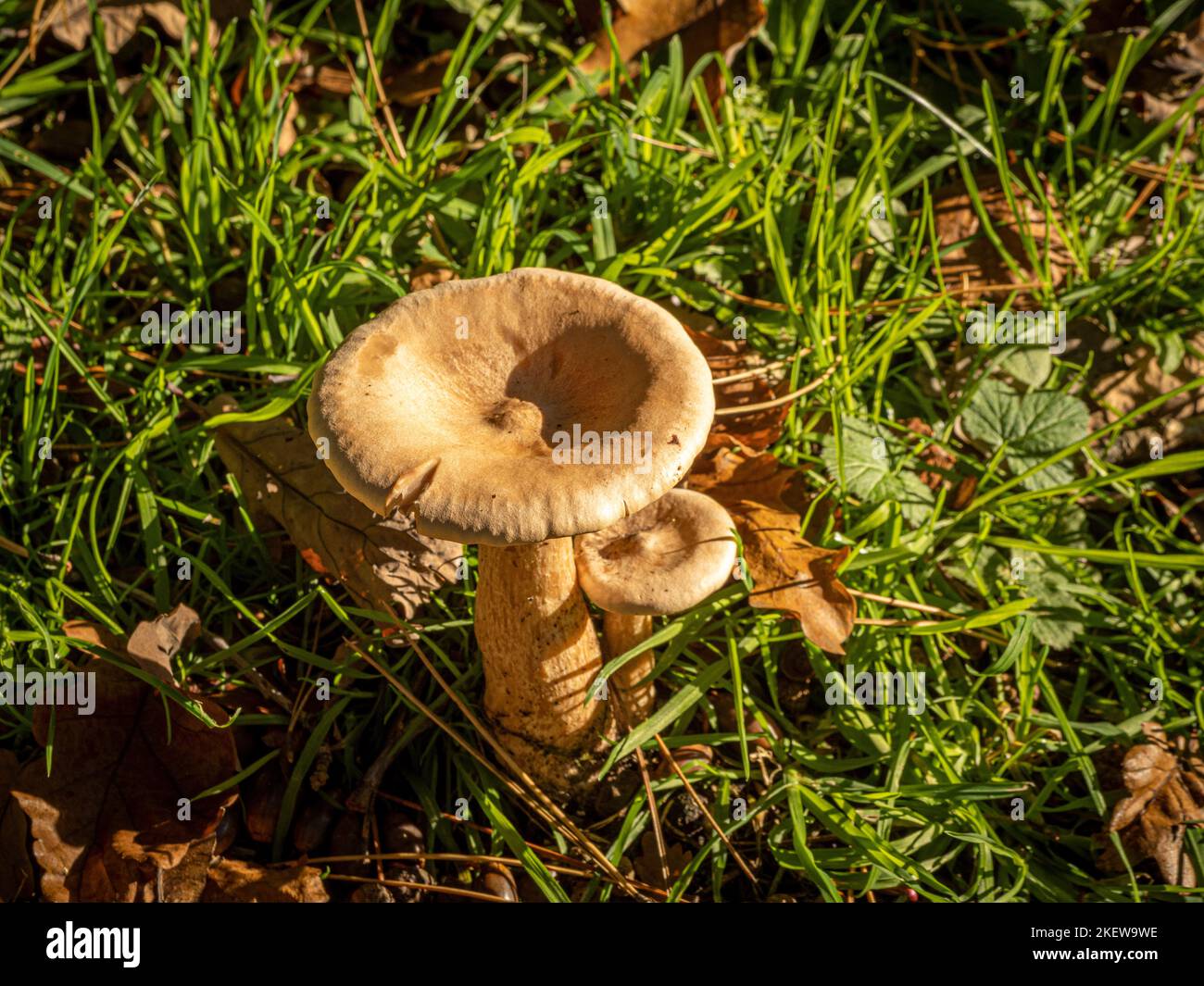Climate Change And The Rise Of Deadly Fungi: A Growing Concern

Table of Contents
Warmer Temperatures and Increased Fungal Growth
Higher temperatures and increased humidity create ideal breeding grounds for fungal spores. These conditions, directly linked to climate change, accelerate fungal germination, growth, and the spread of fungal diseases. The increased prevalence of extreme weather events, such as prolonged periods of rainfall and heatwaves, further exacerbates this problem. Several fungi are seeing their ranges and virulence significantly boosted by these changes. For example, Candida auris, a particularly drug-resistant yeast, and Aspergillus fumigatus, a common mold causing aspergillosis, are exhibiting increased prevalence and geographic spread.
- Increased geographical range of fungal pathogens: Fungi are expanding into new regions previously unsuitable due to colder climates.
- Longer growing seasons for fungi: Warmer temperatures extend the period during which fungi can actively reproduce and spread.
- Higher fungal spore concentrations in the air: Increased humidity and warmer temperatures lead to a greater number of fungal spores in the environment, increasing exposure for humans and animals.
- Weakened immune systems in humans, increasing susceptibility: Heat stress and other climate change-related health impacts can compromise immune function, making individuals more vulnerable to fungal infections.
The Impact on Human Health
Climate change is directly impacting human health through a surge in fungal infections. Vulnerable populations, such as the immunocompromised (including those with HIV/AIDS, cancer patients undergoing chemotherapy, and organ transplant recipients), the elderly, and infants, are particularly at risk. Diseases like histoplasmosis (caused by inhaling Histoplasma capsulatum spores from bird and bat droppings) and coccidioidomycosis (valley fever, caused by inhaling Coccidioides spores from the soil), are experiencing increased incidence in areas previously unaffected or with lower prevalence due to expanding fungal habitats and increased spore dispersal caused by climate change.
- Increased hospitalizations and mortality rates from fungal infections: More severe and frequent fungal infections are leading to higher hospitalization rates and increased mortality.
- Higher healthcare costs associated with treating climate-change-related fungal diseases: The increased prevalence of these infections puts a strain on healthcare systems.
- Challenges in diagnosing and treating emerging fungal pathogens: Drug resistance and the emergence of new fungal pathogens are making treatment increasingly difficult.
The Threat to Agriculture and Food Security
Climate change significantly threatens global food security by increasing the incidence of fungal diseases in crops. Higher temperatures and humidity favor the growth of plant pathogens, leading to reduced yields and crop losses. This impact is devastating for farmers and food producers worldwide, contributing to food shortages and economic instability. Furthermore, mycotoxins—toxic compounds produced by fungi—can contaminate food supplies, posing a significant risk to human and animal health.
- Reduced crop yields leading to food shortages: Fungal blights and other diseases can decimate harvests, impacting food availability and affordability.
- Increased use of fungicides, potentially harming the environment: The reliance on chemical fungicides to combat fungal diseases can have negative consequences for the environment and human health.
- Economic losses for farmers and food producers: Crop losses due to fungal infections translate to significant economic hardship for those involved in agriculture.
Research and Mitigation Strategies
Addressing the challenges posed by climate change and the rise of deadly fungi requires a multi-pronged approach. Research is crucial for understanding the complex interactions between climate change and fungal pathogens, developing new diagnostic tools, and creating more effective antifungal drugs. Simultaneously, mitigation strategies are essential to reduce the risks of climate change-related fungal diseases.
- Development of new antifungal drugs and treatments: Research into novel antifungal agents is vital to combat drug resistance.
- Improved surveillance systems to track fungal outbreaks: Early detection is crucial for implementing timely interventions.
- Sustainable agricultural practices to reduce fungal infections in crops: Adopting practices like crop rotation and integrated pest management can minimize the use of fungicides and reduce the risk of fungal diseases.
- Public health campaigns to raise awareness: Educating the public about the risks of climate-change-related fungal diseases and promoting preventative measures is essential.
Conclusion
The link between climate change and the rise of deadly fungi is undeniable, posing a serious threat to human health, agriculture, and the environment. Understanding this connection is crucial for developing effective strategies to mitigate the risks. From increased research into novel antifungal treatments to implementing sustainable agricultural practices and raising public awareness, a comprehensive approach is needed to combat this growing concern. Learn more about the issue and take action today to protect ourselves and our planet from the devastating impact of climate change and its effect on the proliferation of deadly fungi.

Featured Posts
-
 Fujifilm X H2 Hands On Review Whimsical Refreshing And Fun
May 25, 2025
Fujifilm X H2 Hands On Review Whimsical Refreshing And Fun
May 25, 2025 -
 From Grace To Shame 17 Celebrities Who Lost Everything
May 25, 2025
From Grace To Shame 17 Celebrities Who Lost Everything
May 25, 2025 -
 Hair Trimmers Used In New Orleans Jail Escape Plot Louisiana Inmate Attempt
May 25, 2025
Hair Trimmers Used In New Orleans Jail Escape Plot Louisiana Inmate Attempt
May 25, 2025 -
 Relx Ai Strategie Zorgt Voor Robuuste Prestaties Zelfs In Moeilijke Tijden
May 25, 2025
Relx Ai Strategie Zorgt Voor Robuuste Prestaties Zelfs In Moeilijke Tijden
May 25, 2025 -
 Alternative Delivery Services Thriving Amidst Canada Posts Difficulties
May 25, 2025
Alternative Delivery Services Thriving Amidst Canada Posts Difficulties
May 25, 2025
Latest Posts
-
 Flash Flood Emergency What You Need To Know To Stay Safe
May 25, 2025
Flash Flood Emergency What You Need To Know To Stay Safe
May 25, 2025 -
 Myrtle Beach Newspaper Honored With 59 Sc Press Association Awards
May 25, 2025
Myrtle Beach Newspaper Honored With 59 Sc Press Association Awards
May 25, 2025 -
 Sled Investigating Myrtle Beach Shooting One Fatality Eleven Injuries
May 25, 2025
Sled Investigating Myrtle Beach Shooting One Fatality Eleven Injuries
May 25, 2025 -
 Myrtle Beach Newspaper Celebrates 59 Sc Press Association Awards For Local News
May 25, 2025
Myrtle Beach Newspaper Celebrates 59 Sc Press Association Awards For Local News
May 25, 2025 -
 Volunteer For The Myrtle Beach Cleanup Make A Difference
May 25, 2025
Volunteer For The Myrtle Beach Cleanup Make A Difference
May 25, 2025
